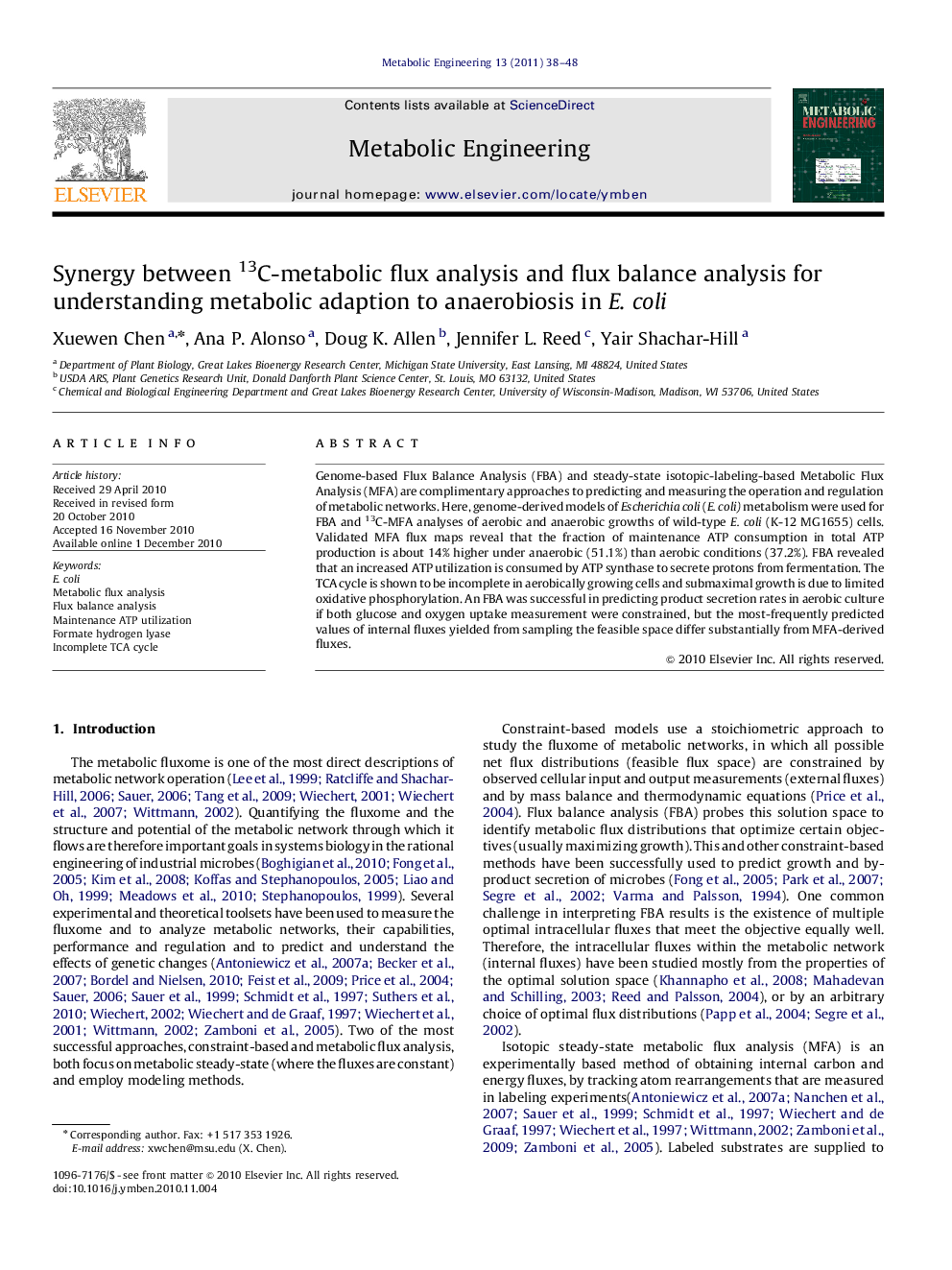| Article ID | Journal | Published Year | Pages | File Type |
|---|---|---|---|---|
| 31833 | Metabolic Engineering | 2011 | 11 Pages |
Genome-based Flux Balance Analysis (FBA) and steady-state isotopic-labeling-based Metabolic Flux Analysis (MFA) are complimentary approaches to predicting and measuring the operation and regulation of metabolic networks. Here, genome-derived models of Escherichia coli (E. coli) metabolism were used for FBA and 13C-MFA analyses of aerobic and anaerobic growths of wild-type E. coli (K-12 MG1655) cells. Validated MFA flux maps reveal that the fraction of maintenance ATP consumption in total ATP production is about 14% higher under anaerobic (51.1%) than aerobic conditions (37.2%). FBA revealed that an increased ATP utilization is consumed by ATP synthase to secrete protons from fermentation. The TCA cycle is shown to be incomplete in aerobically growing cells and submaximal growth is due to limited oxidative phosphorylation. An FBA was successful in predicting product secretion rates in aerobic culture if both glucose and oxygen uptake measurement were constrained, but the most-frequently predicted values of internal fluxes yielded from sampling the feasible space differ substantially from MFA-derived fluxes.
